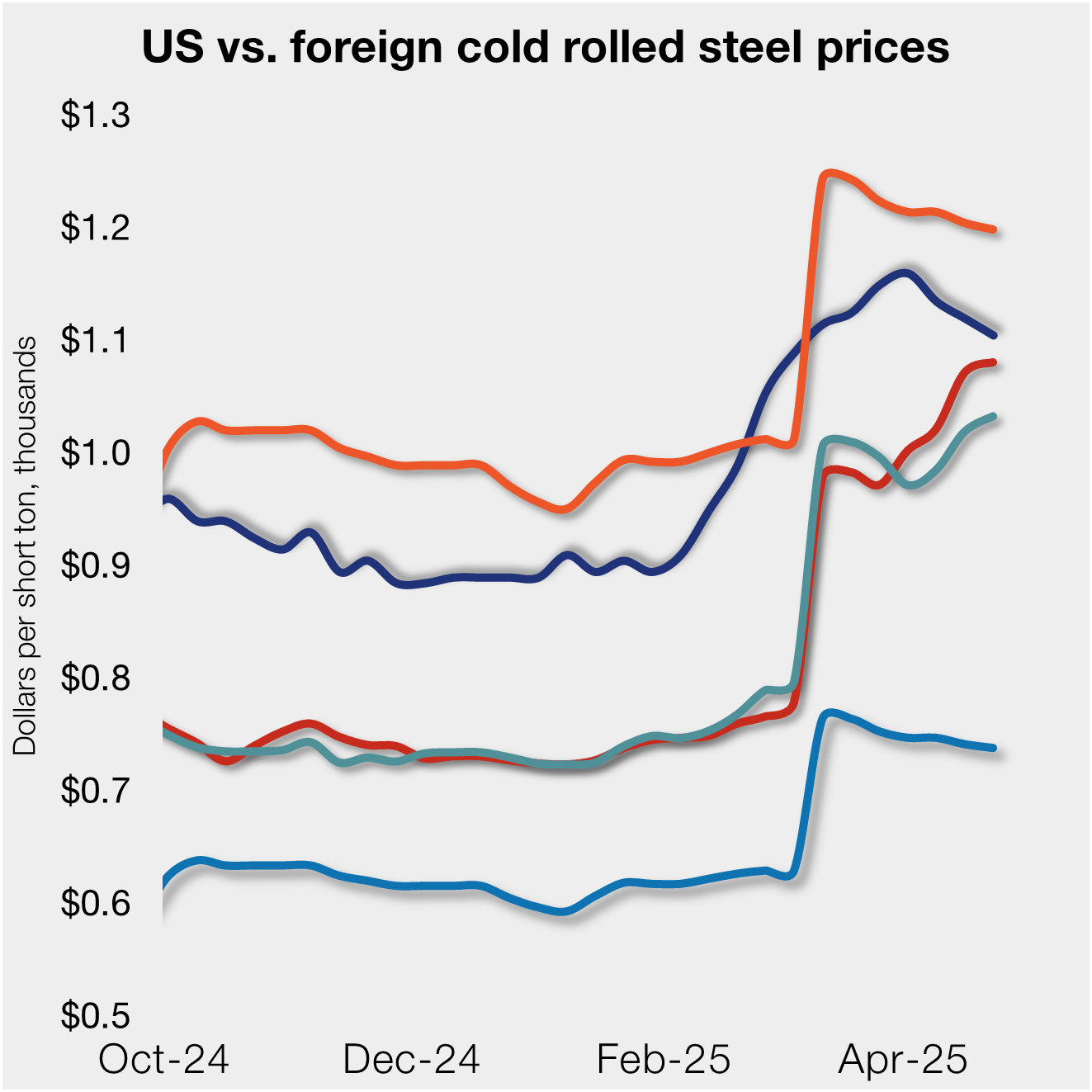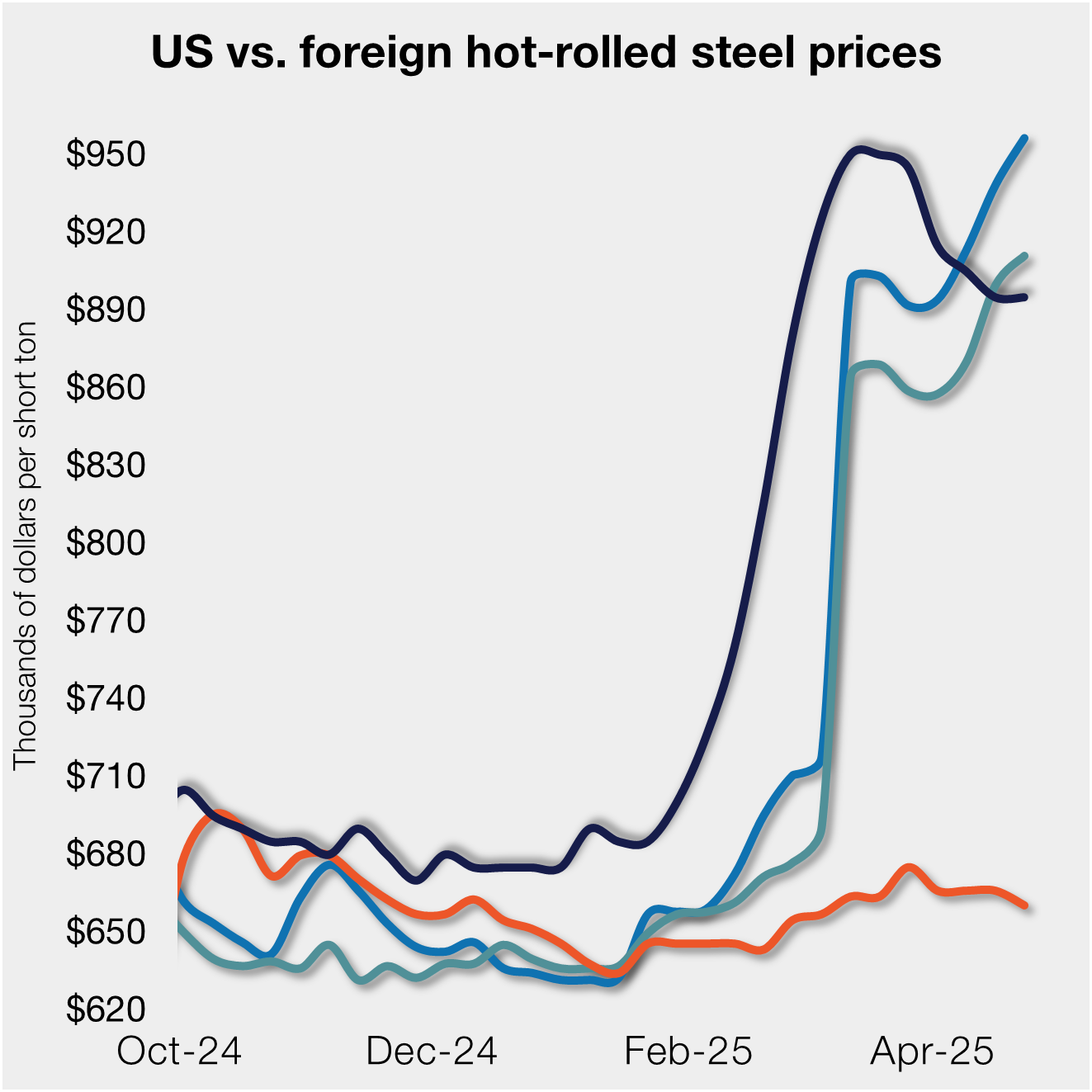Steel Products

Infrastructure Bill Passes House, Steel Cheers - Awaits Biden's Signature
Written by Michael Cowden
November 8, 2021
Steel industry lobbying groups and trade unions cheered passage of the bipartisan House $1 trillion infrastructure bill – which experts estimate could result in millions of tons of new steel demand.
The legislation devotes approximately $850 billion to steel-intensive infrastructure, according to estimates from the American Iron and Steel Institute (AISI).
![]() The House vote, which occurred late on Friday, comes after the Senate approved an infrastructure spending plan in August. The bill will become law once President Biden signs it.
The House vote, which occurred late on Friday, comes after the Senate approved an infrastructure spending plan in August. The bill will become law once President Biden signs it.
“Funding roads and bridges, ports and waterways, water infrastructure, the electric grid and investing in electric vehicle systems, all will require a lot of steel – and our industry is ready to provide that steel,” AISI President and CEO Kevin Dempsey said in a statement.
The money equates to as much as 40 million to 45 million tons of steel demand over the life of those projects, per AISI figures.
The Steel Manufacturers Association (SMA) also welcomed the bill.
“For too long we have treated infrastructure investment as some kind casual choice that could be deferred indefinitely. Passage of this bill means that now is the time to turn promises into projects,” SMA President Philip K. Bell said in a statement.
“We applaud the bill because it focuses on steel-intensive, traditional infrastructure,” Bell added. “We are also pleased with elements of the bill that emphasize sustainable steelmaking, green energy and domestic procurement preferences.”
SMA estimated that every $100 billion in infrastructure spending could result in increased steel demand of four million to six million tons.
The CRU Economics Team earlier this year predicted that infrastructure spending had the potential to increase U.S. steel demand by around 3% or 3 million tons per year for five years. CRU, SMU’s parent company, said that steel demand would be front-loaded because steel is often used early in construction projects.
CRU Principal Analyst Josh Spoores put the figure as high as 4 million tons. But he noted that much would depend on prices – higher prices could mean less total steel consumption.
Whatever the final figure, the euphoria over a deal being reached – after months of political infighting – was apparent in statements from the United Steelworkers (USW) union, the United Auto Workers (UAW) union, and from President Biden himself.
“Our elected leaders have long promised this kind of transformational infrastructure investment but ultimately failed to deliver,” USW President Tom Conway said. “Now, thanks to President Biden’s vision and leadership, Congress has finally come together and passed bipartisan legislation that will directly benefit American workers.”
UAW President Ray Curry sounded a similar note. “For UAW members, this legislation brings reliability and job opportunities by improving the current state of our roads, bridges, water, electric vehicle infrastructure, internet capacity and electrical grid reliability.”
Here are some highlights of the infrastructure bill, according to a White House fact sheet:
• $66 billion in spending on public transportation
• $17 billion for port infrastructure and $25 billion for airports
• $55 billion to get rid of lead water pipes
• $65 billion for the electric grid
• $7.5 billion for electric-vehicle (EV) charging stations
“I don’t think it’s an exaggeration to suggest that we took a monumental step forward as a nation,” President Biden said in a speech on Saturday. “We’re looking forward to having shovels in the ground to begin rebuilding America.”
By Michael Cowden, Michael@SteelMarketUpdate.com

Michael Cowden
Read more from Michael CowdenLatest in Steel Products

US rig count up, Canada declines
Oil and gas drilling activity was mixed this week, according to Baker Hughes. US rig counts expanded for a second straight week, while Canadian activity continued its seasonal slowdown of eight consecutive weeks.

US, offshore CRC prices continue to diverge
US cold-rolled (CR) coil prices declined again this week, slipping for a third straight week. Most offshore markets did the opposite, moving higher this week.

S232 lifts EU HR price over US, Asian HR still well behind
Domestic hot-rolled coil prices were flat this week after dropping for four straight weeks. Most offshore markets bucked the trend and gained ground.

SMU Steel Demand Index dips into contraction
SMU’s Steel Demand Index has moved into contraction, according to late April indicators. The slowdown comes in response to growing tariff uncertainty after the index reached a four-year high in late February.

Nucor selects Fives Group for new galv line at CSI
Nucor Corp. has tapped Fives Group as its partner in designing and manufacturing the new continuous galvanizing line being added at its California Steel Industries (CSI) joint venture in Fontana, Calif.
